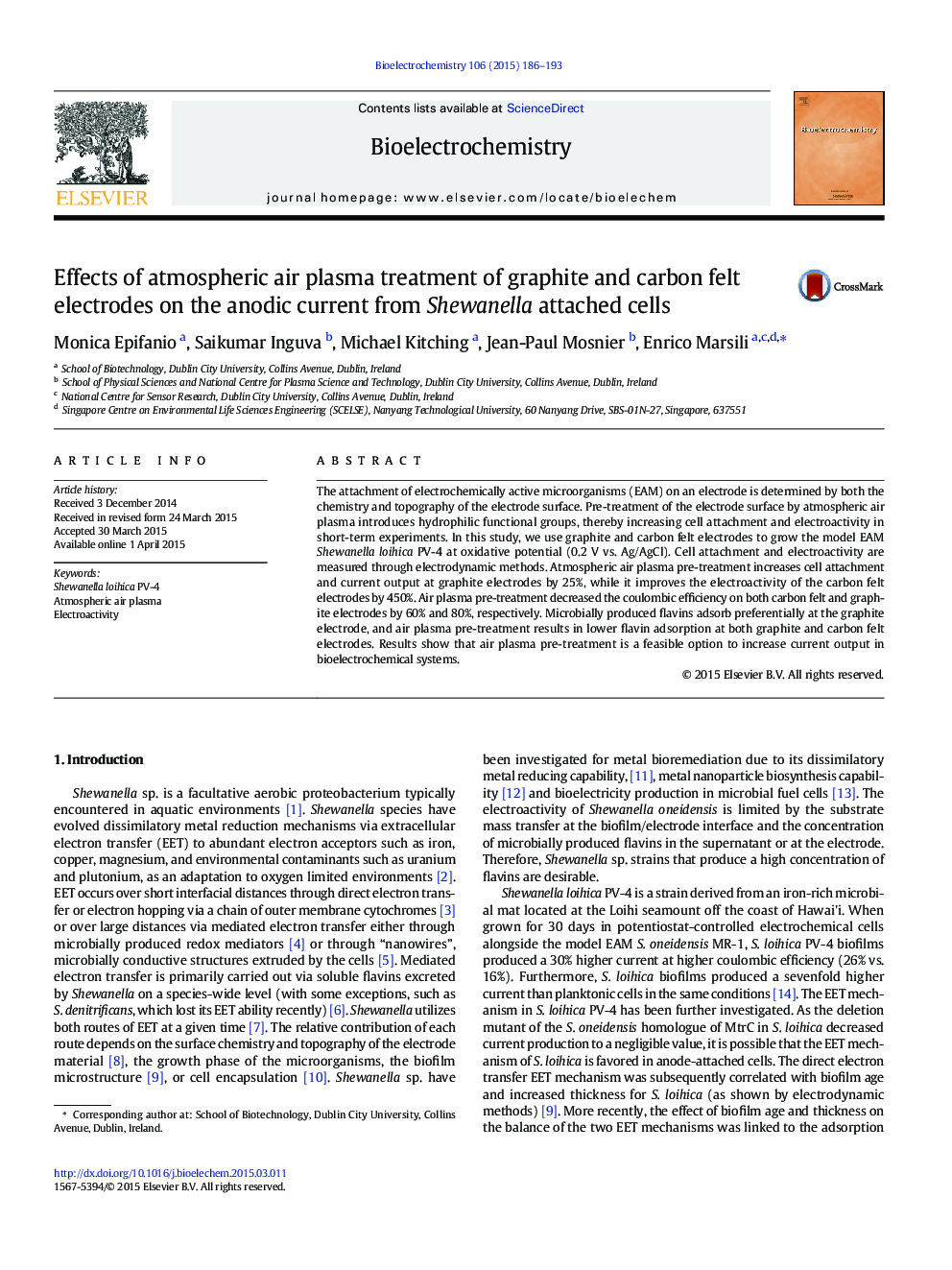| کد مقاله | کد نشریه | سال انتشار | مقاله انگلیسی | نسخه تمام متن |
|---|---|---|---|---|
| 1267876 | 972382 | 2015 | 8 صفحه PDF | دانلود رایگان |
• Air plasma pre-treatment increases Shewanella attachment on carbon felt electrode
• Plasma pre-treatment increases current output by 450% at carbon felt electrodes
• Coulombic efficiency decreases after plasma pre-treatment for all electrodes
• Adsorbed flavins mediate electron transfer at graphite and carbon felt electrodes
The attachment of electrochemically active microorganisms (EAM) on an electrode is determined by both the chemistry and topography of the electrode surface. Pre-treatment of the electrode surface by atmospheric air plasma introduces hydrophilic functional groups, thereby increasing cell attachment and electroactivity in short-term experiments. In this study, we use graphite and carbon felt electrodes to grow the model EAM Shewanella loihica PV-4 at oxidative potential (0.2 V vs. Ag/AgCl). Cell attachment and electroactivity are measured through electrodynamic methods. Atmospheric air plasma pre-treatment increases cell attachment and current output at graphite electrodes by 25%, while it improves the electroactivity of the carbon felt electrodes by 450%. Air plasma pre-treatment decreased the coulombic efficiency on both carbon felt and graphite electrodes by 60% and 80%, respectively. Microbially produced flavins adsorb preferentially at the graphite electrode, and air plasma pre-treatment results in lower flavin adsorption at both graphite and carbon felt electrodes. Results show that air plasma pre-treatment is a feasible option to increase current output in bioelectrochemical systems.
Journal: Bioelectrochemistry - Volume 106, Part A, December 2015, Pages 186–193
